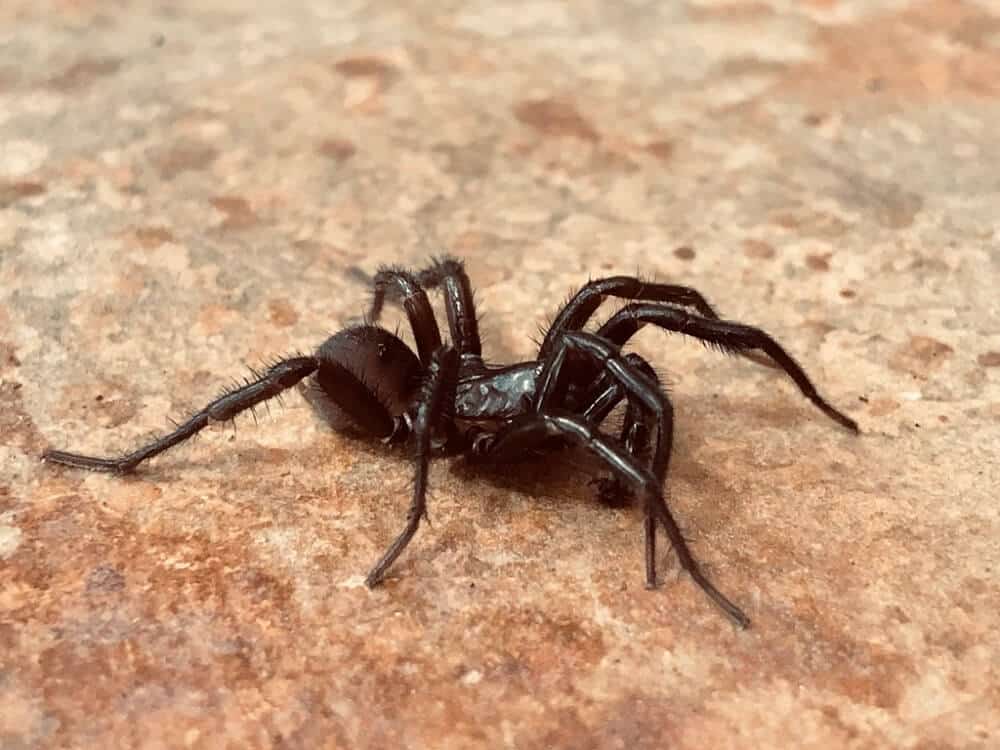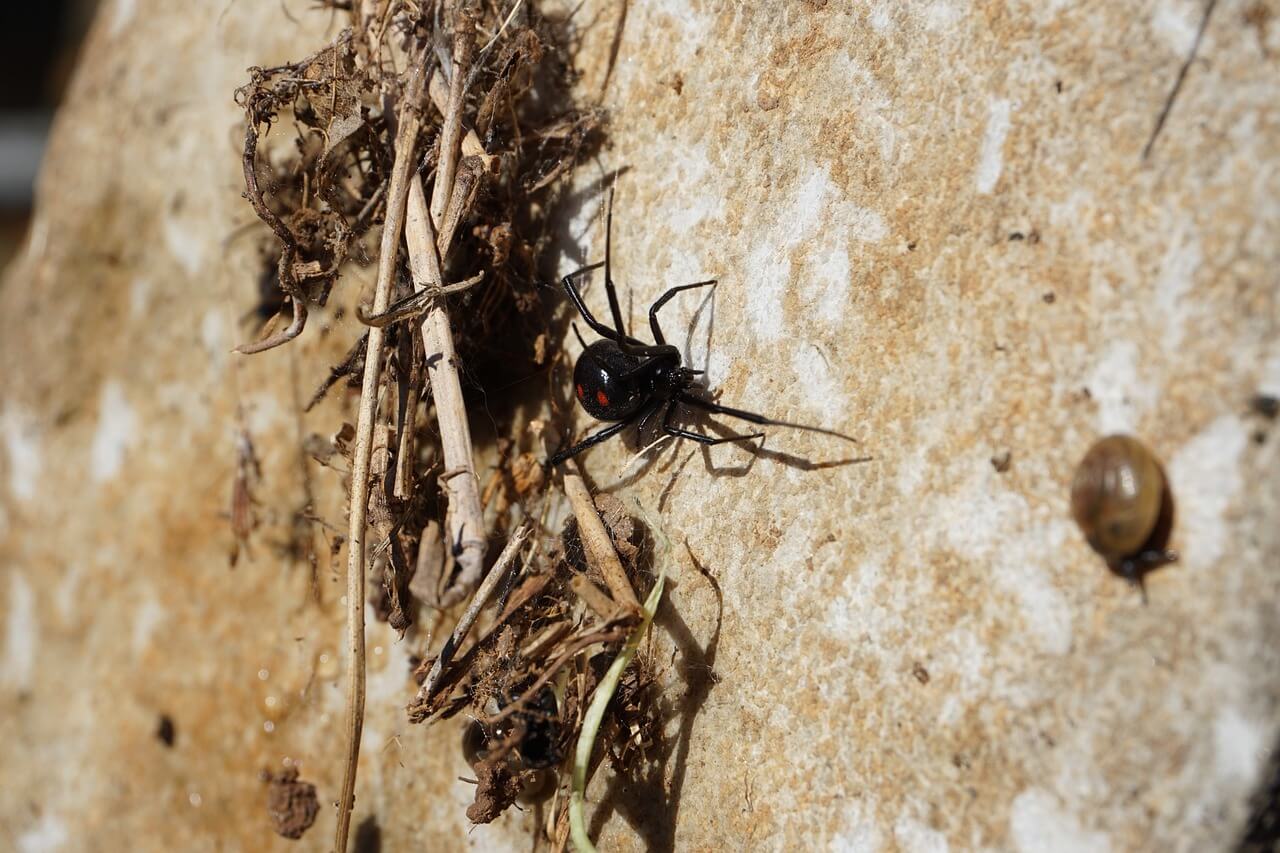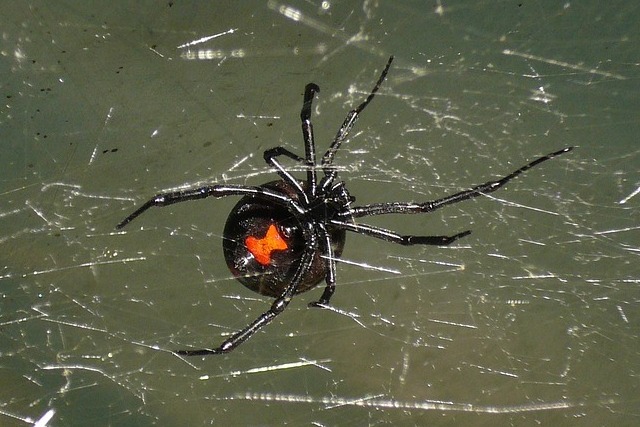Spiders are common — yet often misunderstood — visitors in homes and gardens across the Pacific Northwest, particularly in Oregon and Washington. As temperatures drop, spiders tend to move indoors and closer to us, which can cause concern about potential bites or other safety issues. While some spiders can be harmful, others are a very integral part of the pest control in the ecosystem.
Understanding which spiders are dangerous and which are harmless can help reduce fear and make it easier to manage them in your space. In this guide, we’ll explore how to identify different spider species by color, size and unique features. We’ll also cover which spiders to watch out for, which spiders have benefits and tips for keeping them out of your home.
Oregon is home to a fascinating diversity of spider species. From tiny jumping spiders to large orb weavers, these incredible arachnids can be found living in forests, fields cities and even our own homes across the state. Join me as I explore some of the most common and interesting spiders found in Oregon.
Jumping Spiders
Jumping spiders are some of the most endearing and easily observable spiders in Oregon. With their large front facing eyes, jumping spiders have excellent vision and seem to study the world around them with curiosity
The bold jumper is one of the largest jumping spiders in Oregon, reaching up to 18 mm in size. As their name suggests, they are daring hunters, using their excellent eyesight to stalk prey during the day. The males are especially striking, with iridescent chelicerae (fang-like mouthparts).
The zebra jumper is aptly named for its vivid black and white striped appearance. It is a small spider, reaching only 9 mm in size. But what it lacks in size, it makes up for in personality, actively exploring its surroundings.
Johnson’s jumping spider is larger, around 10 mm, and mimics wasps with its brown and red coloring. It builds silken nests under rocks and wood.
Jumping spiders are harmless to humans and fun to watch as they hunt. With over 50 species in Oregon, keep an eye out for these tiny daredevils.
Orb Weavers
Orb weaver spiders construct the quintessential web – a circular “orb” with spokes and radii. Many orb weavers in Oregon can grow quite large.
The cross orbweaver builds vertical, messy looking webs in vegetation. Females reach 20 mm in size and will vibrate rapidly in their webs when disturbed. Their bite is not dangerous to humans.
The banded argiope is yellow with black zig zag stripes. Their webs can be over 2 meters across! Despite their intimidating size, their venom is mild.
Perhaps the most striking is the yellow garden spider. Up to 28 mm, it has a yellow and black striped abdomen and builds massive webs in fields. Their bite is comparable to a bee sting.
Orb weavers use their strong webs to ensnare flying insects. Though large, they are not aggressive and help control pest populations.
Cobweb and Combfoot Spiders
Cobweb and combfoot spiders rely more on their venom and speed than web building to catch prey. Many build small messy webs or no web at all.
The triangulate combfoot lives near human homes. It has a triangular marking on its abdomen and preys on pests like ants and cockroaches.
The false widow is dark brown to black with light markings down its back. It looks intimidating but its bite is mild. It eats household bugs.
The western black widow is iconic with its red hourglass marking. However, despite legends surrounding this spider, its bite is rarely fatal. Antivenom exists as a precaution.
Though some cobweb spiders look creepy, most are not dangerous. Their speed and venom help them catch fast moving insects. They are excellent natural pest control.
Wandering Spiders
Unlike web dwellers, wandering spiders actively hunt prey on the ground and in vegetation. They rely on stealth and speed rather than webs.
Wolf spiders are burly, hairy spiders that live on the ground. The rabid wolf spider has a distinct pattern on its abdomen. Though large, they are not aggressive toward humans.
Crab spiders hide in flowers and ambush pollinators. The goldenrod crab spider can change color from white to yellow to hunt on different flowers. Their camouflage is incredible.
Ground spiders, like the western parson spider, hide under logs and leaves during the day, then hunt at night. Their speed and erratic movements make them difficult to track.
Wandering spiders are diverse and fascinating to observe in the field. Though fast moving, they are reluctant to bite and help control pest populations.
Cellar Spiders
Cellar spiders prefer dark corners in basements and cellars, but they occasionally end up in homes. They are gangly spiders with incredibly long legs relative to their body size.
The marbled cellar spider has a small grey body dwarfed by its spindly legs, which can be 30 mm long. It builds messy webs in corners to snare prey.
The long-bodied cellar spider is even more spindly. Its legs can be up to 75 mm while its body is under 10 mm! Despite this spider’s intimidating appearance, its bite is harmless.
Daddy long-legs spiders are actually cellar spiders. These spiders vibrate their webs rapidly when disturbed, but cannot pierce human skin.
Though cellar spiders look strange, they are timid and help eliminate pests in damp corners of homes. They would much rather run and hide than bite.
Oregon is home to over 400 spider species living in every habitat imaginable. Jumping spiders amaze with their colors and personalities. Orb weavers construct engineering masterpieces. Ground hunters rely on stealth. And cellar spiders are gentle giants. Spiders contribute immensely to ecosystems by controlling insect pests. So next time you spot a spider, take a moment to admire its unique abilities!

Identifying Spiders by Color
Color is usually one of the easiest ways to identify a spider. Here are the common colors of spiders you might encounter in OR/WA:
– Black: The black widow is one of the most infamous spiders in the region. While it’s not often found indoors, its shiny black body and red hourglass marking make it easy to spot during an encounter. Other common black spiders in the region include various types of jumping spiders, which have thick legs and tend to be more active in warmer months.
-Brown: Brown is another common color for spiders in OR and WA. The brown recluse is occasionally found here, though it’s fairly rare. The hobo spider, another brown spider, is more common in homes and is often confused with the brown recluse. Common house spiders are also brown and tend to build cobwebs in dark, quiet places in homes.
–Orange & Red: Orb-weaving spiders have orange, red and yellow hues. These brightly colored spiders are not dangerous and are typically found in gardens. Garden spiders with reddish or orange tones are active in the late summer and early fall, adding color to outdoor spaces.
-White & Yellow: Crab spiders are white or yellow, blending into flowers where they hunt for insects. These are generally harmless to humans. Another common yellow spider is the garden spider, known for its striking yellow and black markings, which can sometimes surprise people with their size and vibrant colors.

Common Spider Species in Oregon and Washington
Here’s a closer look at common spider species you may find in the Pacific Northwest:
-Black Widow: Known for its potent venom, the black widow has a shiny black body with a red hourglass marking on its abdomen. It’s considered venomous but only bites if disturbed. Black widows often create messy, irregular webs in hidden places like woodpiles, sheds and garages.
–Hobo Spider: Found indoors and outdoors, this brown spider is common in OR and WA. While not deadly, its bite can cause irritation. Look for its distinctive funnel-shaped webs. The hobo spider’s webs are usually located close to the ground or in basements, which can make them seem more threatening in-home environments.
-Wolf Spider: A large, fast-moving spider that hunts rather than spins webs. It’s intimidating but not aggressive toward humans. Wolf spiders are unique in that they carry their egg sacs with them, making them easy to recognize if spotted carrying a small, round sac on their abdomen.
-Orb-Weaving Spider: These spiders build large, circular webs, usually in gardens. They can be brightly colored in shades of red, orange or yellow and pose no danger.
-Crab Spider: Named for their crab-like appearance, these spiders are small and usually found on flowers, using camouflage to catch prey. They’re harmless to humans.

Spiders of Oregon
FAQ
Are there poisonous spiders in Oregon?
-
The black widow spider (Latrodectus hesperus) is the most well-known venomous spider in Oregon.
- They are most common in rocky, south-facing slopes with little tree cover, and are rarely seen in the northwestern area of the state.
- They have been found in Willamette Valley homes.
- They are most common in rocky, south-facing slopes with little tree cover, and are rarely seen in the northwestern area of the state.
-
The brown widow spider (Latrodectus mactans) was spotted in Oregon for the first time in 2018 and is another venomous spider to be aware of.
- They can cause similar symptoms to black widows, such as fever and muscle spasms.
- They can cause similar symptoms to black widows, such as fever and muscle spasms.
-
While the hobo spider (Eratigena agrestis) is common in Oregon, it is not considered a dangerous spider, and bites are not known to cause serious harm.
-
It’s important to note that brown recluse spiders (Loxosceles reclusa) do not occur in Oregon, despite reports to the contrary.
-
Other Spiders:While most Oregon spiders are harmless, it’s always best to leave them alone, especially if you’re unsure of the species.
-
Spider Bites:Spider bites are not common in Oregon, and most are not dangerous, but if you suspect a bite from a venomous spider, seek medical attention immediately.
What is Oregon’s largest spider?
Today, we’re uncovering the mysteries of the biggest spider you can encounter in the Beaver State—the Giant House Spider (Eratigena atrica).
Does Oregon have tarantulas?
-
This spider, belonging to the jumping spider family (Salticidae), is known to occur throughout the Pacific Northwest, including Oregon.
-
Not true tarantulas:While they can be large and may resemble tarantulas, they are not true tarantulas.
-
OregonLive.com reports that the giant house spider (Eratigena duellica, formerly known as Tegenaria gigantea) is one of the largest spiders in the Pacific Northwest and may be found in and around homes in Oregon.
-
Wolf Spiders are also among the largest spiders found in Oregon.
-
Spiders in Oregon:Many other spider species are commonly found in and around homes in Oregon, including the barn funnel weaver, the giant house spider, and the hobo spider.
-
Not harmful:Although some spiders in Oregon may look like they are venomous, none are known to have bites harmful to people.
How do I identify a spider?
- All spiders have eight legs and six to eight eyes.
- Spiders have two body regions: the cephalothorax and the abdomen.
- Male spiders are normally smaller and have different color markings than females.
Are there spiders in Oregon?
Yes, a wide variety of spider species are found across Oregon. In this article, we’ll look at 36 of the most common spiders you may encounter in Oregon.
How can you identify a spider in Oregon?
To identify a spider in Oregon, look for distinctive features and behaviors. For example, the common house spider has a web with two vertical stripes running down the middle, and it plays dead when threatened. Spiders in Oregon are abundant, and here are 36 common species you may encounter in your backyard with pictures.
What is the largest spider in Oregon?
The giant house spider (Eratigena atrica) is the largest spider in Oregon. Adult females can reach a total leg span of up to 3 inches (75 mm). The giant house spider is the most common spider in and around homes in the Pacific Northwest. It is a close relative and look-alike of the hobo spider and therefore often mis-identified.
What is a giant house spider in Oregon?
The giant house spider is a large brown spider and often also confused with the common wolf spider in Oregon. While the giant house spider, the wolf spider and the hobo spider are the largest spiders often found inside homes, most house spiders in Oregon are smaller and often live among us without us noticing them.
What is the largest arachnid in Oregon?
The giant house spider is the largest spider in Oregon and prefers to reside where humans live. With a leg span of up to three inches, these arachnids can look intimidating but harmless to humans. This species looks similar to the hobo spider, and it may be difficult to tell them apart, but giant house spiders are bigger than hobo spiders. 4.
Are spider bites common in Oregon?
Spider bites are not common. Spiders help people by eating the insects that eat our food, invade our homes, and are vectors for disease. The most common spiders submitted for identification at the Oregon Department of Agriculture (ODA) are the hobo spider (Eratigena agrestis) and giant house spider (Eratigena atrica).
